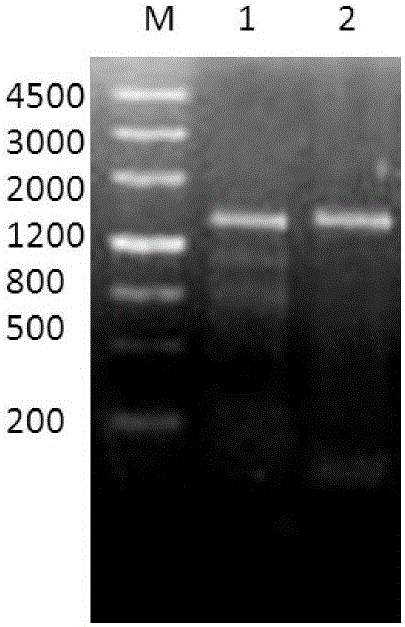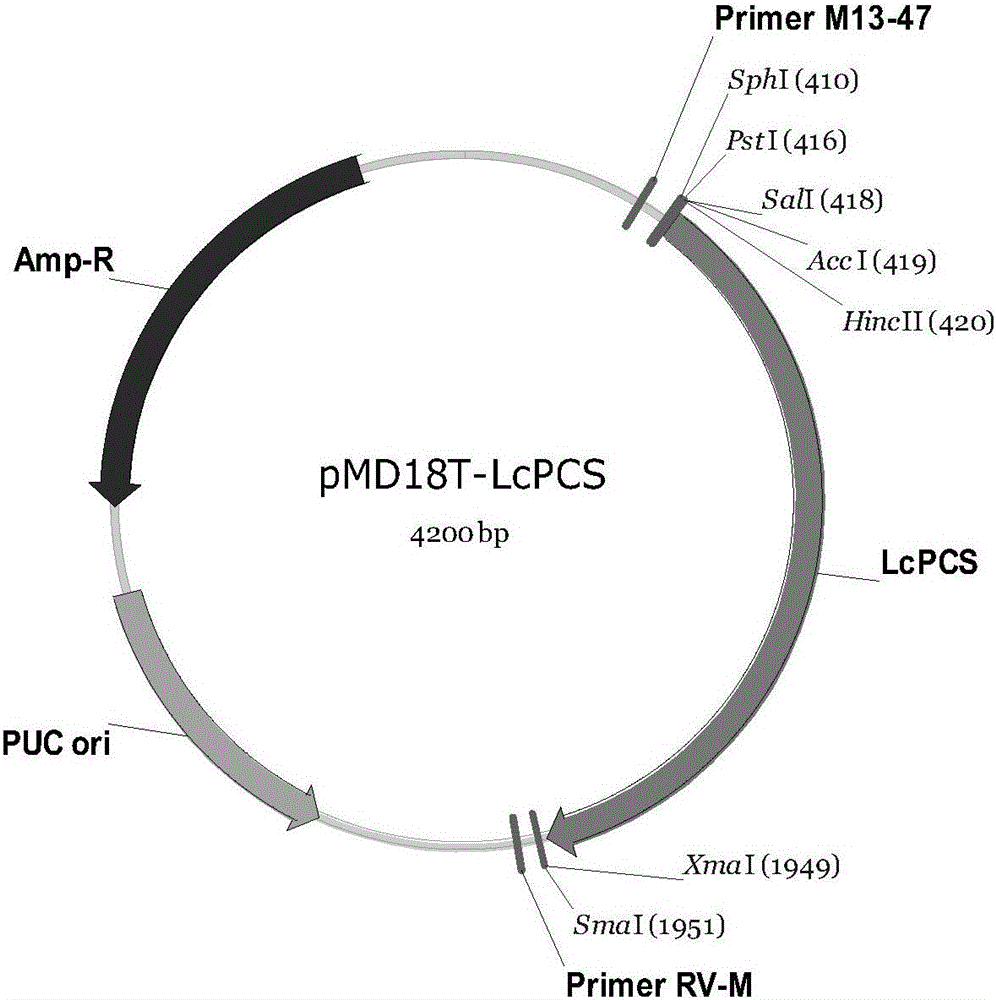Wlofberry phytochelatin synthetase as well as coding gene and application thereof
A technology of encoding genes and synthetases, which is applied in the fields of Lycium barbarum phytochelatin synthetase and encoding genes and applications, can solve the problems of heavy screening workload, long breeding time, and high technical requirements, and achieve high tolerance to cadmium ions, The effect of high salt tolerance
- Summary
- Abstract
- Description
- Claims
- Application Information
AI Technical Summary
Problems solved by technology
Method used
Image
Examples
Embodiment 1
[0030] Cloning of Phytochelatin Synthase LcPCS Gene from Lycium barbarum
[0031] Using Trizol reagent, total RNA was extracted from 100 mg of fresh Lycium barbarum (Chinese wolfberry) leaves, using the Transgentransecriptone-stepgDNAremovalandcDNAsynthesissupermix kit, using Lycium barbarum total RNA as a template, OligodT 18 As a primer, the first strand of cDNA was synthesized under the action of AMV reverse transcriptase.
[0032] According to the Unigene sequence design of Lycium barbarum transcriptome database, the upstream primer P1 shown in SEQIDNO.3: 5'ATGGCGATGGCGGGTT3' and the downstream primer P2 shown in SEQIDNO.4: 5'CTAAAAGGGAGGTGCAGTCA3' were obtained by landing PCR (TD-PCR) (see figure 1 .), and then use Tiangen Company’s ordinary DNA product purification kit to purify the PCR reaction product to obtain the purified LcPCSPCR fragment, and operate according to the kit instructions.
[0033] The PCR product sequence was sequenced and verified, and a sequence wit...
Embodiment 2
[0035] Construction process of recombinant vector pMD18-T-LcPCS
[0036] The LcPCS gene shown in the sequence table SEQIDNO.2 is connected to the pMD18-T vector,
[0037] Reaction conditions: 16°C, 30min. The ligation product was transformed into E.Coli.Top10. Pick white colonies, colony PCR method to confirm the length of the insert in the T vector, such as figure 2 , as expected, the vector was sent to Huada Gene Company for sequencing, and we obtained the 1506bp deoxynucleotide sequence of the gene, which was blasted at NCBI, which showed high homology with tomato, potato, etc., indicating that the gene was cloned successfully . The LcPCS deoxynucleotide sequence and the pMD18-T sequence were spliced and assembled into the cloning vector pMD18-T-LcPCS, such as image 3 shown.
Embodiment 3
[0039] Construction process of prokaryotic recombinant expression vector pET28a-LcPCS in Escherichia coli
[0040] First, the pMD18-T-LcPCS plasmid is used as a template, and the P3 (CGC) shown in SEQ ID NO.5 GGATCC ATGGCGATGGCGGGTT), P4 shown in SEQ ID NO.6 (ACGC GTC GAC CTAAAAGGGAGGTGCAGTCA) are the upstream and downstream primers respectively to amplify the LcPCS gene. The reaction conditions are: 94°C, 4min; (94°C, 30Sec; 56°C, 30Sec; 72°C, 1min50Sec) 32cycles; 72°C, 8min. There is a BamHI restriction site (GGATCC) in P3 and a SalI restriction site (GTCGAC) in P4, then the PCR product and the pET28a empty vector plasmid are double-digested with BamHI and SalI respectively, and the digested products of the two are Ligation, the ligation product was transformed into E.ColiDH5α, spread on LB plates containing 200 mg / L kana resistance, and cultured at 37°C. After 12 hours, pick a single colony for colony PCR verification, such as Figure 4 , Shake the colony PCR-positive...
PUM
 Login to View More
Login to View More Abstract
Description
Claims
Application Information
 Login to View More
Login to View More - R&D
- Intellectual Property
- Life Sciences
- Materials
- Tech Scout
- Unparalleled Data Quality
- Higher Quality Content
- 60% Fewer Hallucinations
Browse by: Latest US Patents, China's latest patents, Technical Efficacy Thesaurus, Application Domain, Technology Topic, Popular Technical Reports.
© 2025 PatSnap. All rights reserved.Legal|Privacy policy|Modern Slavery Act Transparency Statement|Sitemap|About US| Contact US: help@patsnap.com



